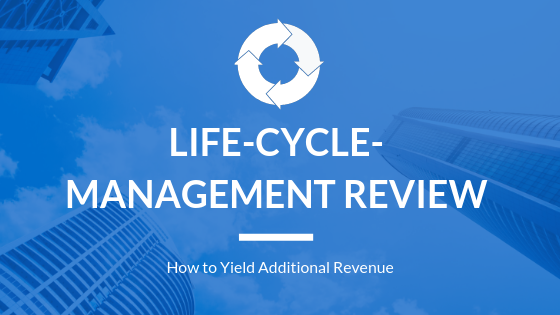We have all had a similar situation as marketing leaders. We are in front of the executive management team in late September of the year presenting a turn-around plan explaining how we will meet our year-end revenue and margin targets when you are currently below plan.
Sales have been down all year for several reasons: A new, low-cost competitor entered your market cutting into your market share, a new product you relied on for incremental revenue is delayed, higher than expected sales force turnover leaves some of your key accounts uncovered, or your customers are transitioning to a newer technology. Whichever headwinds you face, you are still on the hook to meet your annual top-line revenue and margin targets. But, what can you do to ensure you and your team meet your annual revenue targets? You can discontinue a mature product line with low margins!
 As part of your marketing responsibilities, the product life-cycle-management review process is a valuable tool. You and your team should be evaluating your product mix continuously to ensure top-line revenue growth and strong margins. The process of life-cycle management provides an opportunity for you and your marketing team to rebalance your product portfolio by discontinuing products with sub-optimal margins and declining demand. Often, these are mature products continuing to generate revenue. However, over time, the margins decline due to dwindling customer demand. Discontinuing these products through a life-cycle management review process may be a golden opportunity to increase sales at the end of the year.
As part of your marketing responsibilities, the product life-cycle-management review process is a valuable tool. You and your team should be evaluating your product mix continuously to ensure top-line revenue growth and strong margins. The process of life-cycle management provides an opportunity for you and your marketing team to rebalance your product portfolio by discontinuing products with sub-optimal margins and declining demand. Often, these are mature products continuing to generate revenue. However, over time, the margins decline due to dwindling customer demand. Discontinuing these products through a life-cycle management review process may be a golden opportunity to increase sales at the end of the year.
Crafting a last-buy-program at the end of the year can be tricky! A successful last-buy-program requires input from your internal stakeholders which include sales management and representatives, service, manufacturing, supply chain, and customer service teams. Failure to include your internal stakeholders can cause confusion, product backorders, and unhappy customers. However, a well thought out last-buy-program at the end of the year provides you and your team with an opportunity to increase year-end sales as customers scramble to stock up on inventory before the product is discontinued. There are some risks associated with a last-buy-program that you and your team should consider.
First, some customers will immediately switch over to a different product but only buy a limited quantity until they are comfortable with the new product. You risk lost sales. Second, other customers will balk at their favorite product being discontinued. You risk damaging the relationship with a long-standing customer. Third, discontinuing a product may give your customer a reason to look at competitive products. You are risking your entire revenue with this account. All of these circumstances must be reviewed carefully with your internal stakeholders when you craft a last-buy-program, especially at the end of the year.
In summary, it is important to manage your product portfolio to maximize your revenues and margins. Utilizing the product portfolio life-cycle-management review process may highlight products which should be discontinued. A carefully crafted and timed last-buy-program may help you reach your annual revenue and margin targets. However, you and your team must consider the risks associated with this undertaking.
